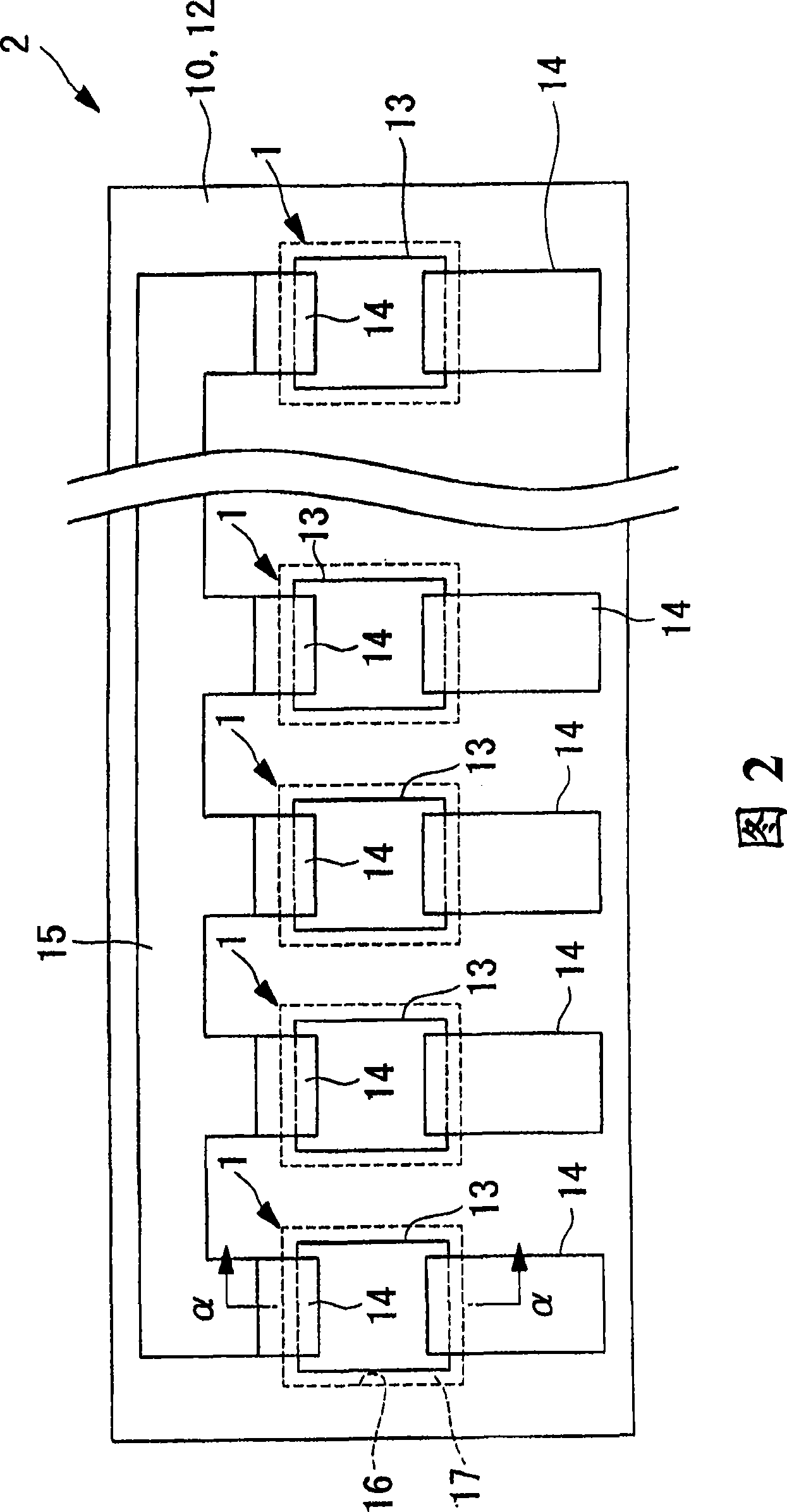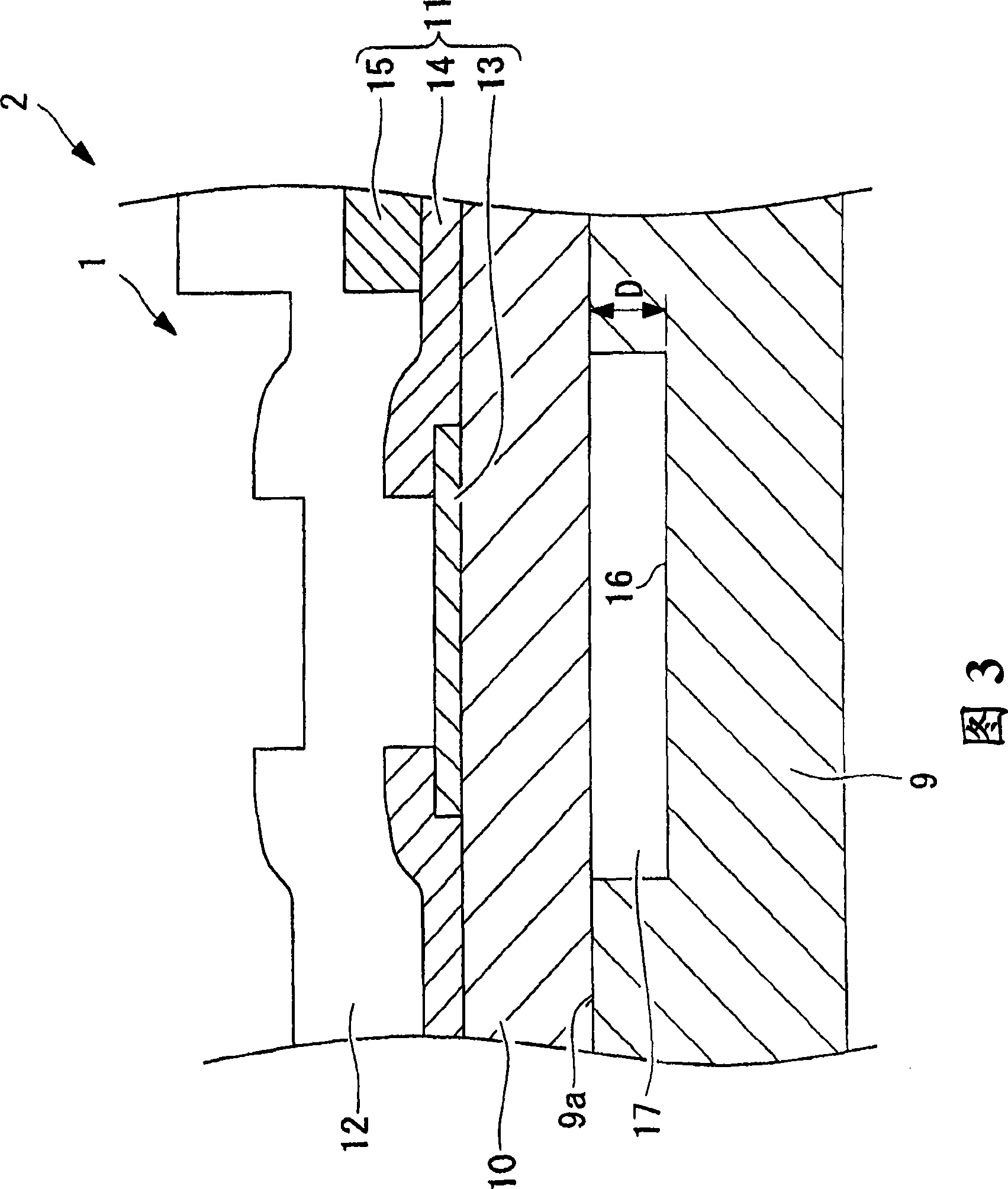Heating resistor element, manufacturing method for the same, thermal head, and printer
A heating resistor and heating resistor technology, applied in printing and other directions, can solve the problems of large differences in thermal expansion coefficient, expensive material processing, and reduced printing quality, and achieve the effects of high printing performance, low cost, and reduced power consumption
- Summary
- Abstract
- Description
- Claims
- Application Information
AI Technical Summary
Problems solved by technology
Method used
Image
Examples
Embodiment Construction
[0040] The heating resistance element 1 and its manufacturing method, thermal head 2 and thermal printer (printer) 3 according to an embodiment of the present invention are described below with reference to FIGS. Figure 7 to describe.
[0041] The heating resistance element 1 according to this embodiment is used in a thermal head 2 of a thermal printer 3 shown in FIG. 1 .
[0042] The thermal printer 3 includes a body frame 4, a platen roller 5 arranged horizontally, a thermal head 2 arranged to face the outer periphery of the platen roller 5, and a thermal head 2 between the platen roller 5 and the heat sensitive printer. A paper feeding mechanism 7 for feeding thermal paper 6 between the heads 2, and a pressing mechanism 8 for pressing the thermal head 2 against the thermal paper 6 with a predetermined pressing force.
[0043] The thermal head 2 is formed in a flat plate shape as shown in the front view of FIG. 2, and includes a plurality of heating resistance elements 1 s...
PUM
| Property | Measurement | Unit |
|---|---|---|
| depth | aaaaa | aaaaa |
| thickness | aaaaa | aaaaa |
| thickness | aaaaa | aaaaa |
Abstract
Description
Claims
Application Information
 Login to View More
Login to View More - R&D
- Intellectual Property
- Life Sciences
- Materials
- Tech Scout
- Unparalleled Data Quality
- Higher Quality Content
- 60% Fewer Hallucinations
Browse by: Latest US Patents, China's latest patents, Technical Efficacy Thesaurus, Application Domain, Technology Topic, Popular Technical Reports.
© 2025 PatSnap. All rights reserved.Legal|Privacy policy|Modern Slavery Act Transparency Statement|Sitemap|About US| Contact US: help@patsnap.com



